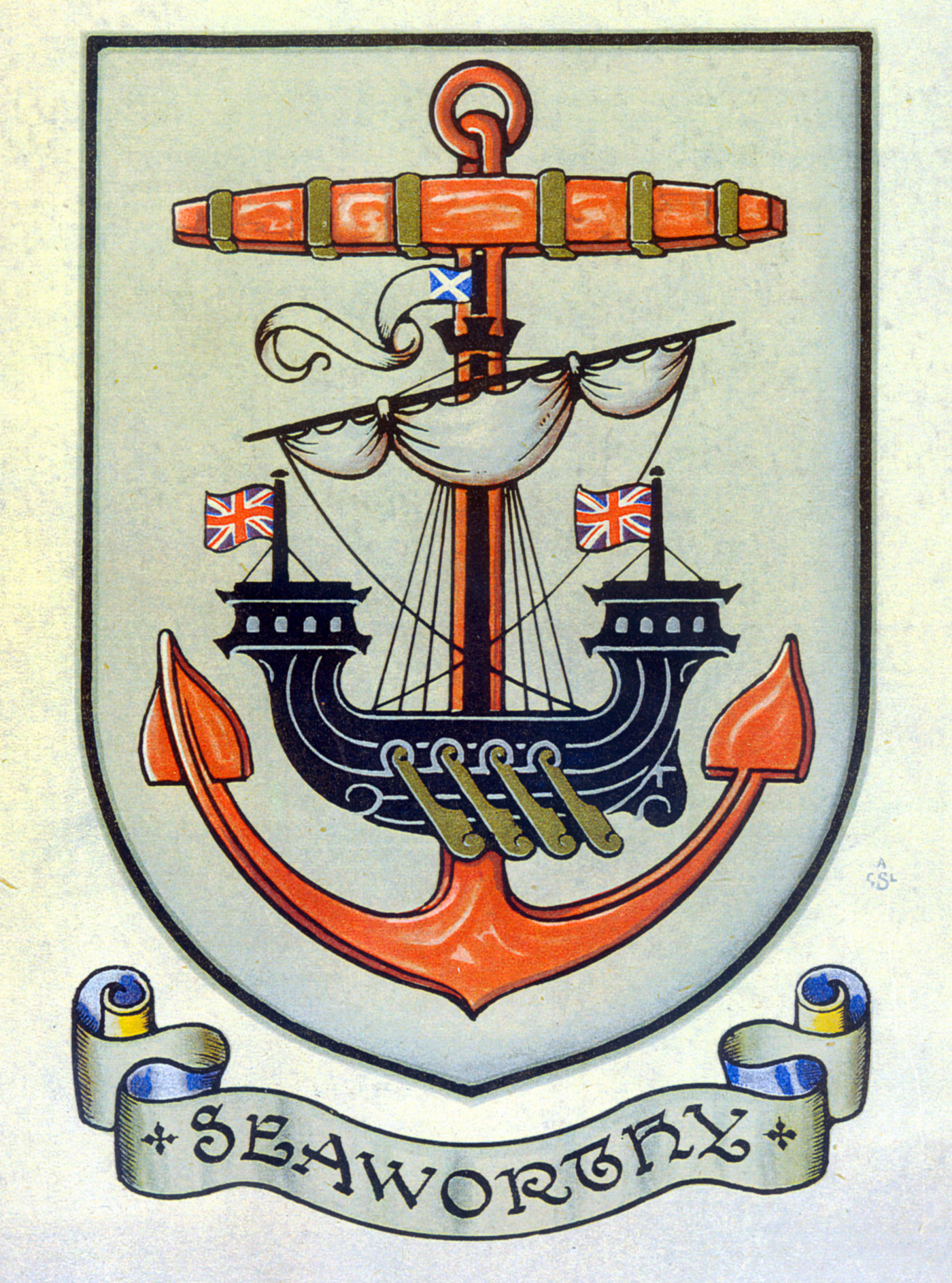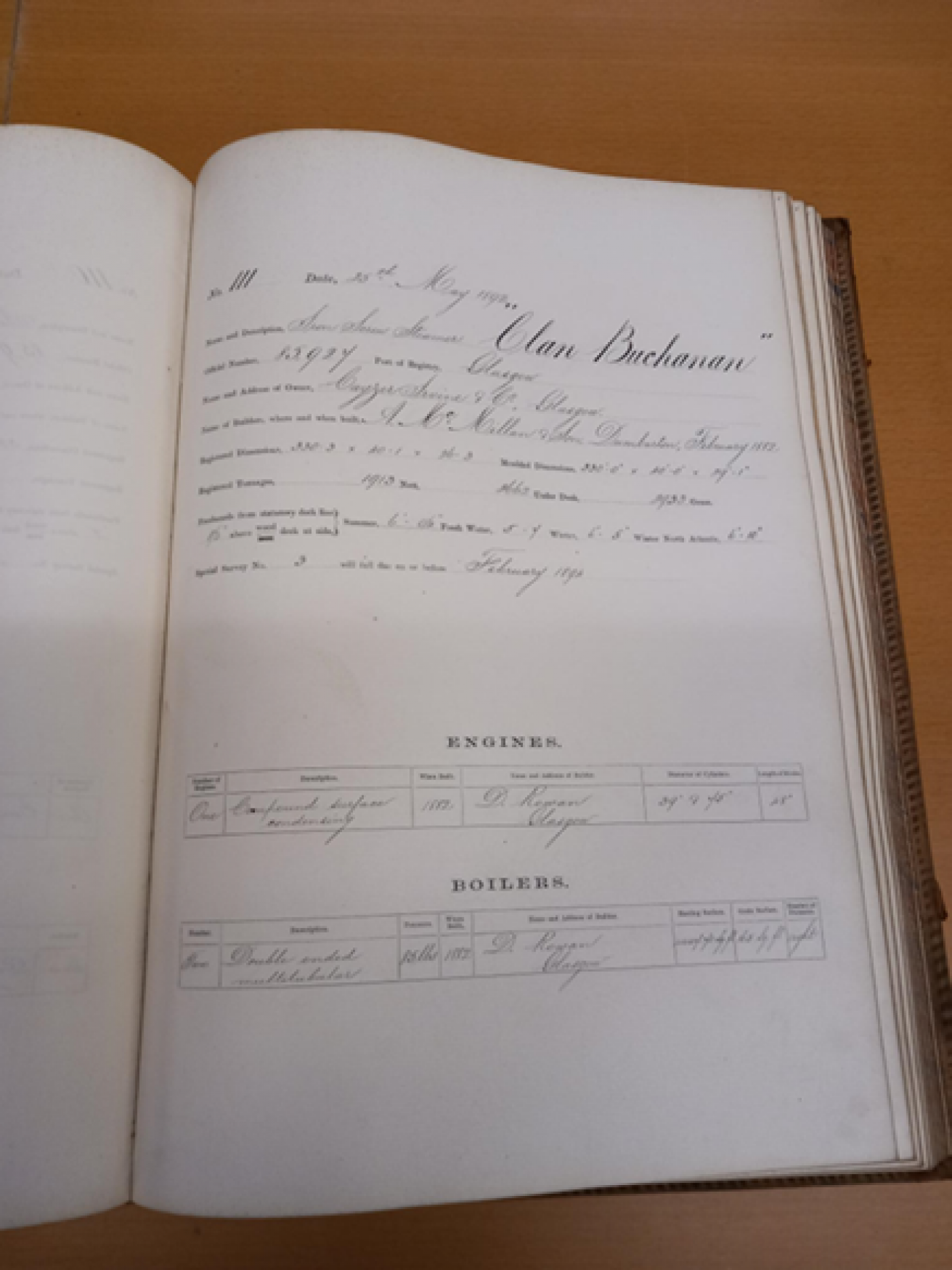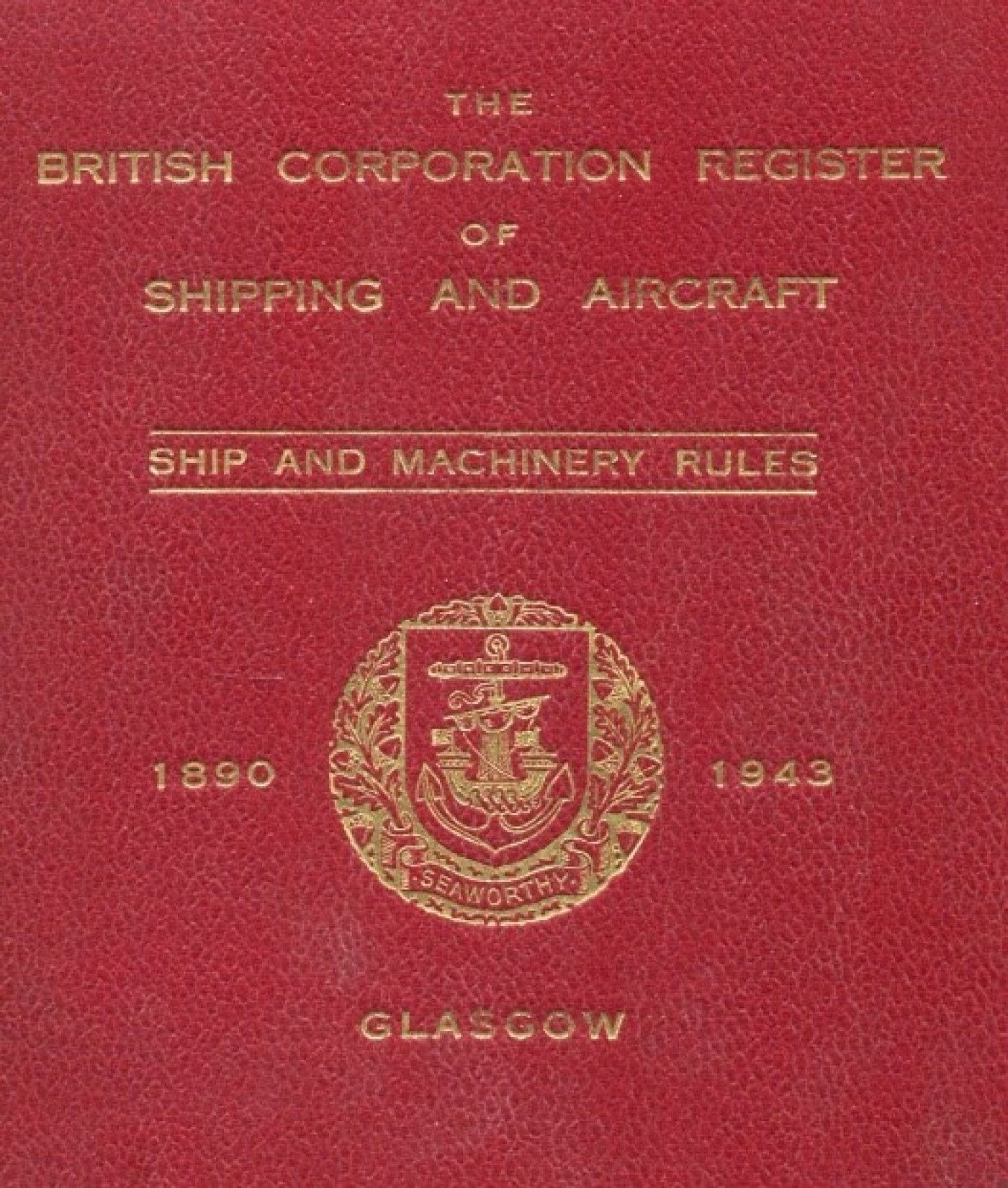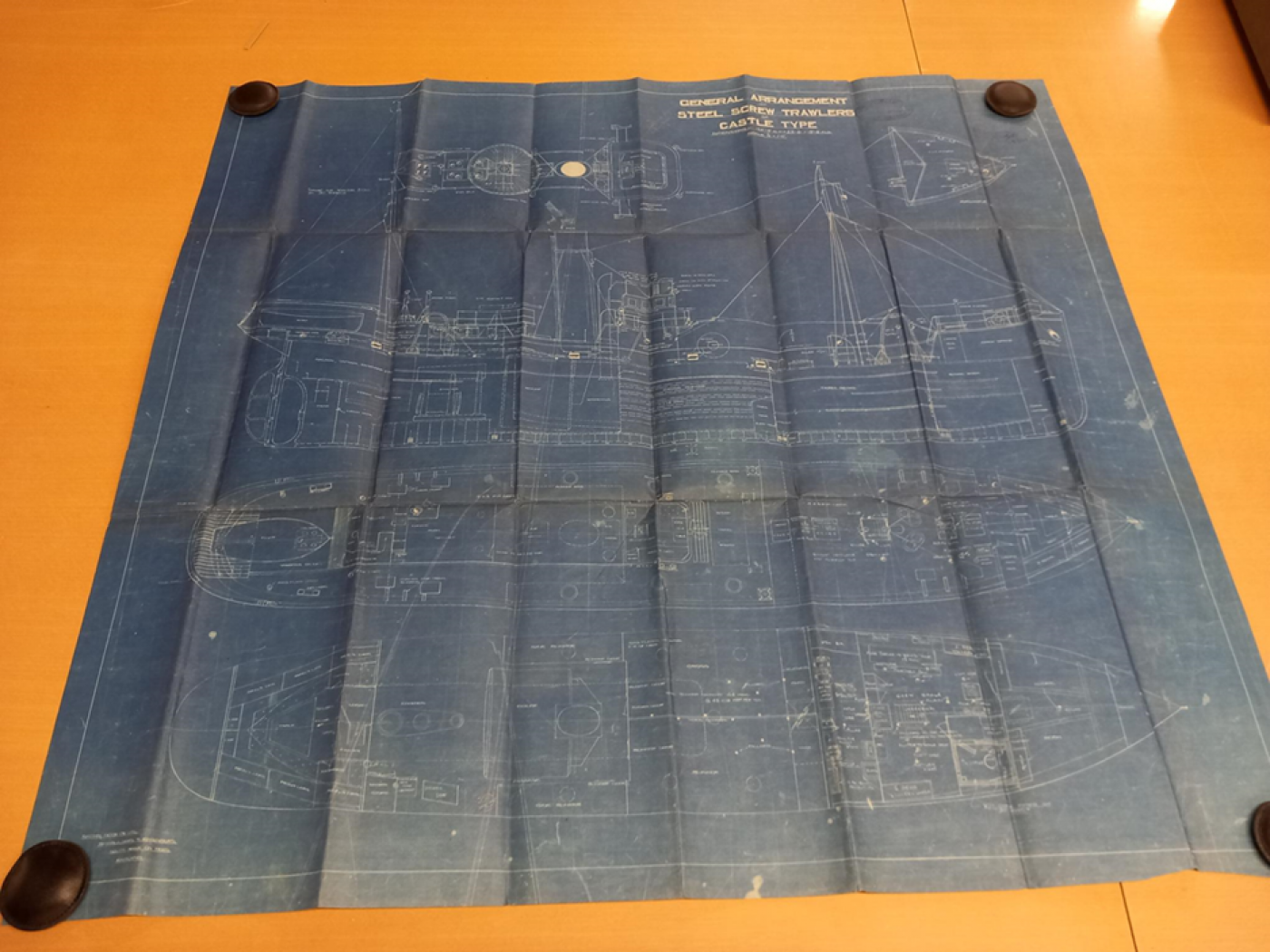Thursday, March 16 2023
Max Wilson, Archivist at the Heritage & Education Centre, has written an article on the British Corporation for the Survey and Registry of Shipping.
A Unique Collection of Maritime History: The Archives of the Lloyd's Register Foundation
The archives of the Lloyd’s Register Foundation comprise a wide range of different collections which we work to catalogue and make available as soon as possible. One such collection of international importance is that of the British Corporation for the Survey and Registry of Shipping (BC), an historic competitor classification body that contributed to the professionalism and scientific basis of marine surveying.

The coat of arms for the British Corporation Register
BC was founded in 1890 at Glasgow by Clyde ship builders, shipowners, and technical societies, who were concerned that Lloyd’s Register (LR) would have a monopoly on the assignment of load lines. Following a successful campaign to allow BC and the French classification body Bureau Veritas authority to assign freeboard and load lines (in addition to LR), BC was incorporated in October 1890. BC would go on to release its first Register Book and Rules in 1893.
The Origins and Early Development of BC
BC soon established a reputation for willingness to examine innovative new developments, including the first of the Turret type, capitalising on the major changes to shipping and quickly earning the support of shipyards globally. Producing an annually published Register of Ships, BC was led by a Committee of Management responsible for overall policy and governance, headed by a Chairman and Secretary, together with a (later honorary) President.
The Role of BC's Committee of Management and Technical Subcommittee
The organisation’s Rules for Classification of Ships were formulated and continually amended by a Technical Subcommittee headed by Chief Surveyor Mr Courtier-Dutton, and from 1900 by James Foster King, whose force of technical expertise was responsible for establishing the reputation of BC. Surveyors posted at ports would produce survey reports documenting the condition of vessels at the time of their inspection.

British Corporation Register Classification Certificates volume no. 1.

Open page of the Classification Certificates for the engines and boilers of the Clan Buchanan.
Click here for digitised British Corporation for the Survey and Registry of Shipping documents.
The period between 1910 and 1920 marked a period of rapid growth for the Corporation. Following approaches from the American Bureau of Shipping, Registro Italiano Navale and Teikoku Kaiji Kyokai, BC Rules were adopted in a mutual partnership. The reciprocal agreements also meant all the societies shared resources, particularly surveyors. By the Second World War half of the world’s total merchant tonnage was under construction to BC standards.
Throughout this period, BC was continually invited to contribute to UK government select committees, as well as the 1930 International Load Line Conference and the 1939 International Congress of Classification Societies. Between 1927 and 1937, alongside LR, BC entered the realm of aircraft inspection, changing their name to reflect this, before the inspections were brought back under UK government control with the formation of the Air Registration Board.

British Corporation Register Ship and Machinery Rules, 1943.
BC's Service in the Second World War
In stark contrast to the First World War, when BC’s service was requisitioned only in the latter stages, the Second World War saw mobilisation from the start. In addition to surveying newly constructed vessels and overseeing repairs, they attended on behalf of the Ministry of War Transport, as well as the Admiralty, in the inspection under construction of smaller naval craft like minesweepers, corvettes, and motor torpedo boats. In this period, BC would work ever closer with LR in pursuit of the war effort.
The Amalgamation of BC and Lloyd's Register
Following the Second World War increased international competition would spur talks between BC and LR to investigate the possibility of amalgamation, first discussed in 1912. Eventually, on 28th March 1949 a unification was achieved between the two bodies. The assets and finances of BC were concluded and transferred in 1951, though BC Rules remained in use until 1954 when LR’s Rules were revised.
BC's Records and their Significance in Maritime History
Records of the organisation were transferred to LR in 1951 and are now under the custodianship of the Heritage & Education Centre (HEC). Cataloguing has shed new light on this underused resource. Spanning the years 1890-1951 in a total of 224 separate items and volumes, the records cover wider engineering developments in shipping, and tens of thousands of vessels operating worldwide. It consists of minutes, financial records, classing certificates, selections of survey reports, plans, indices, details of staff and publications.
With the completion of cataloguing, HEC is committed to conserving and making this significant collection available for public research and access.

General plan for a Castle Type steel screw trawler. Built originally as minesweepers for the First World War, many were completed too late for service and were converted as fishing trawlers.

